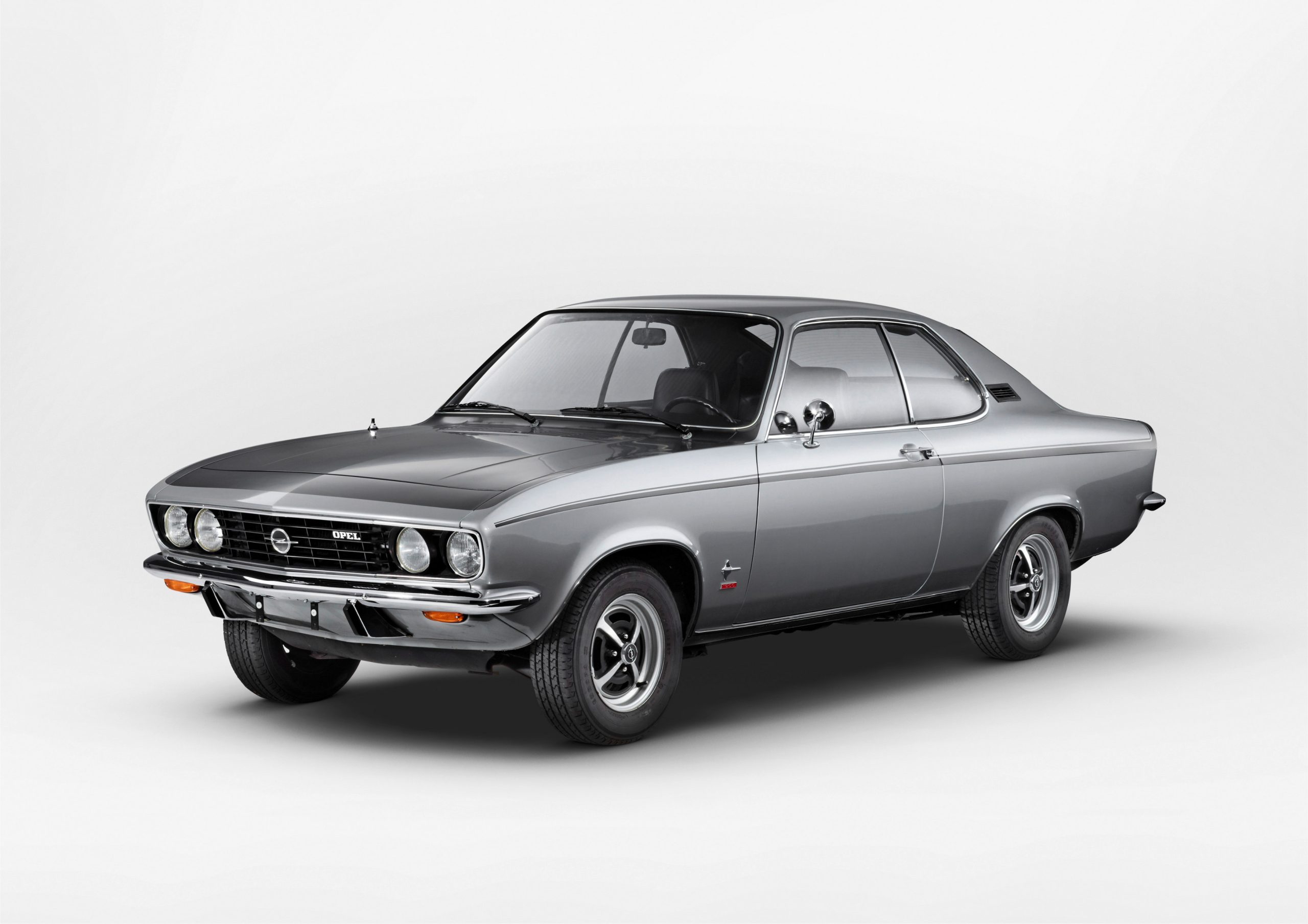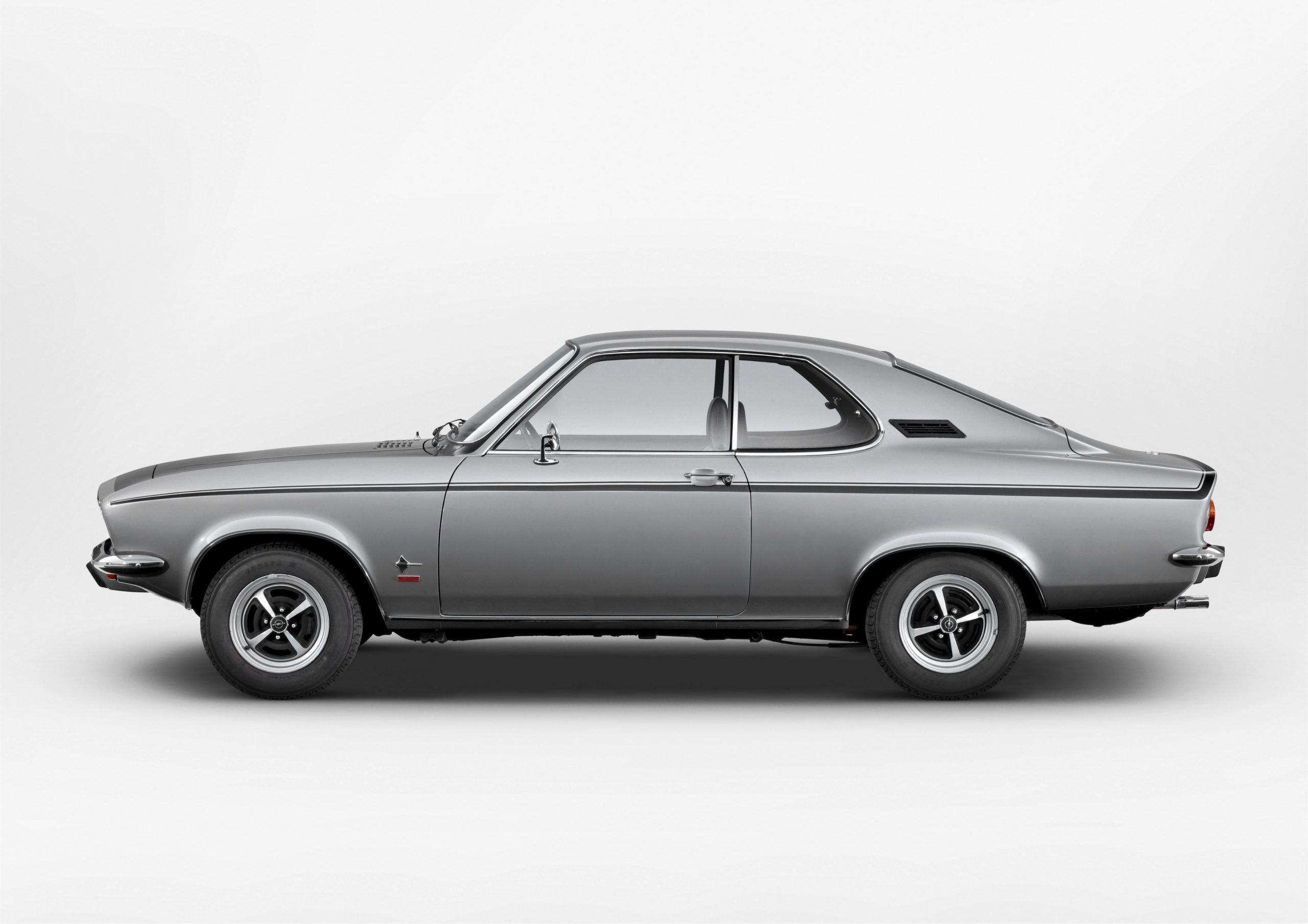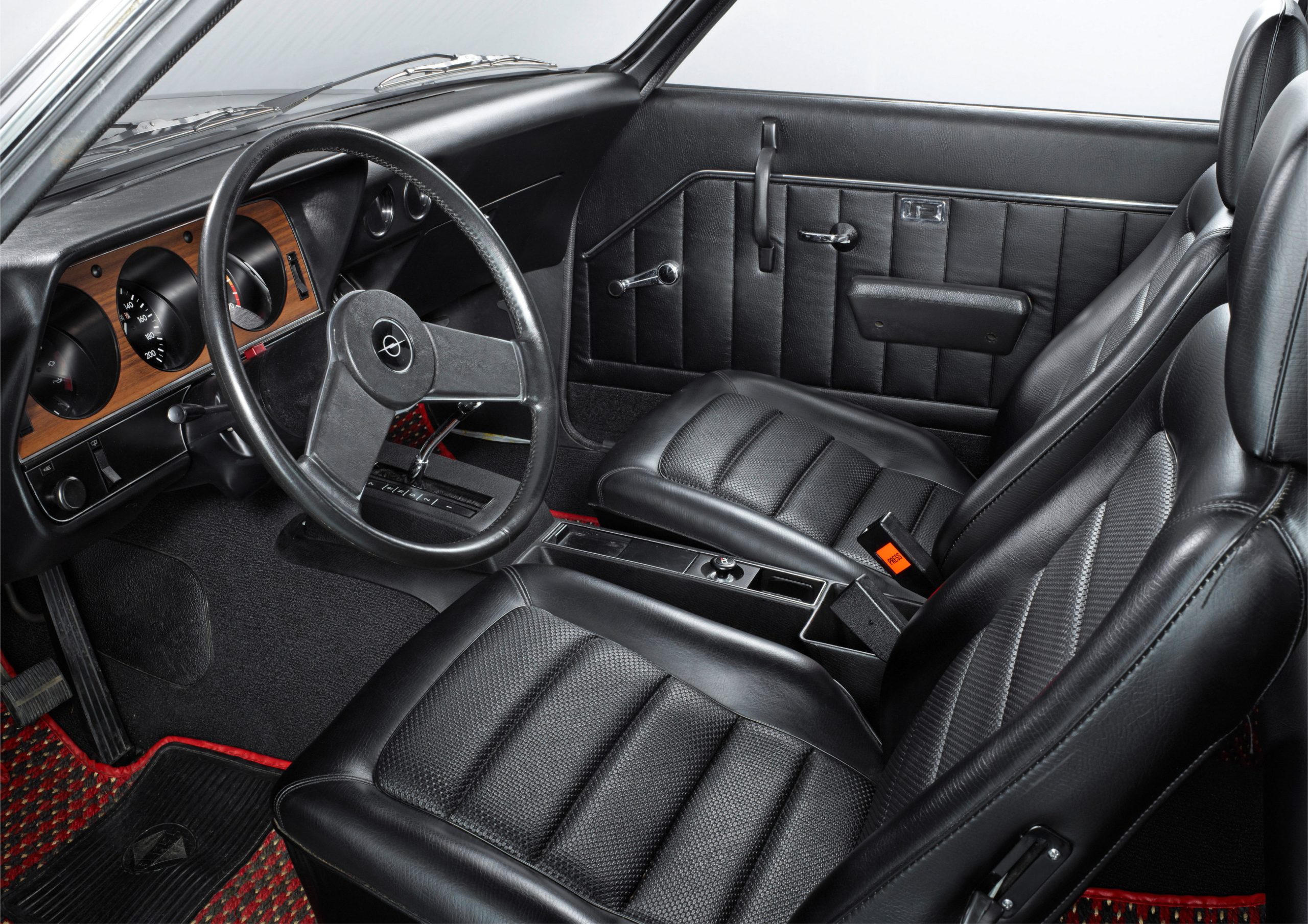The Opel Manta was a five-seater passenger car produced by Adam Opel AG, which at the time belonged to the US automotive group General Motors (GM). Some versions were only four-seater, for example Manta B GT/E. The first Manta (Manta A) was launched in September 1970. The car was the coupe version of the Opel Ascona A sedan introduced two months later with the same platform. With this coupe with a water-cooled four-cylinder front engine and rear-wheel drive, Opel competed with the Ford Capri, which had been built since late 1968. The Manta A had a self-supporting steel body with shock-compliant rear and front sections. Manta, Manta L and Manta SR versions were available from September 1970.
The Opel Manta was a five-seater passenger car produced by Adam Opel AG, which at the time belonged to the US automotive group General Motors (GM). Some versions were only four-seater, for example Manta B GT/E. The first Manta (Manta A) was launched in September 1970. The car was the coupe version of the Opel Ascona A sedan introduced two months later with the same platform. With this coupe with a water-cooled four-cylinder front engine and rear-wheel drive, Opel competed with the Ford Capri, which had been built since late 1968. The Manta A had a self-supporting steel body with shock-compliant rear and front sections. Manta, Manta L and Manta SR versions were available from September 1970.
The front wheels were individually suspended on unequal length wishbones with coil springs, telescopic shock absorbers and torsion bar stabilizer. Rear axle was a rigid drawbar axle with coil springs, trailing arms and Panhard rod as on the 1967 Kadett B. It was also referred to by Opel as the center-joint axle. The rear part of the cardan shaft from the cardan joint was guided in a longitudinally movable support tube that was rigidly connected to the differential gear housing.
The Manta A was initially offered with three different CIH engines with an overhead camshaft: Two 1.6-liter variants with 68 hp (50 kW) and 80 hp (59 kW) were derived from the 1700 Rekord C engine by reducing the bore by 3 mm. The third variant was the 1.9-liter C-record engine with 90 hp (66 kW). In 1972, a 1.2-liter engine with a side camshaft from the Kadett with 60 hp (44 kW) was added. The fully synchronized four-speed transmission with a short gear stick on the center console was referred to in advertising as a sport shift.
All versions of the Opel Manta came as a five-seat sports coupe. Particularly striking were the elongated, front-hinged hood as well as the rear section with four round taillights, the wide doors with frameless windows and the black radiator grille with four round headlights. While the Manta and Manta L still came with hubcaps, the Manta SR had hubcap-less steel sport wheels as standard. The Manta’s occupants sat in a safety cell with a shock-absorbing safety steering column. The seats were strongly contoured and comfortable. A vinyl roof was available at extra cost, but it promoted corrosion as moisture collected under the bonded PVC film.
As of January 1, 1976, the Gasoline Lead Law required fuel with a lower lead content. Opel then adapted its engines to meet the legal requirements. As a result, power output was reduced from 50 kW (68 hp) to 44 kW (60 hp) for the 1.6-liter N, from 59 kW (80 hp) to 55 kW (75 hp) for the 1.6-liter S, and the 1.9-liter engine had only 65 kW (88 hp) instead of 66 kW (90 hp). The 1.2-liter engine with 44 kW (60 hp) remained unchanged. From June 1975, however, the output of the 1.9-liter engine was increased again to 66 kW (90 hp) with the Zenith INAT 35/40 downdraft register carburetor. A total of: 498,553 units of the Manta A were produced. The cheapest Manta cost about 8,300 DM.
The Manta SR was the rally version of the Manta L for the sporty oriented clientele. It was distinguished from the other versions by different wheels with wider rims (5 1/2 J × 13) and low-profile radial tires,[4] a matte black hood, and black side stripes (rally stripes). Instrumentation includes a tachometer and an additional console with clock, ammeter and oil pressure gauge; the SR’s passenger sun visor has no vanity mirror. The SR was offered only with 80-horsepower (59-kW) and 90-horsepower (66-kW) engines; in the latter, a shorter overall gear ratio results in improved acceleration figures and increased hill-climbing ability; the automatic transmission was not offered for the SR trim.



